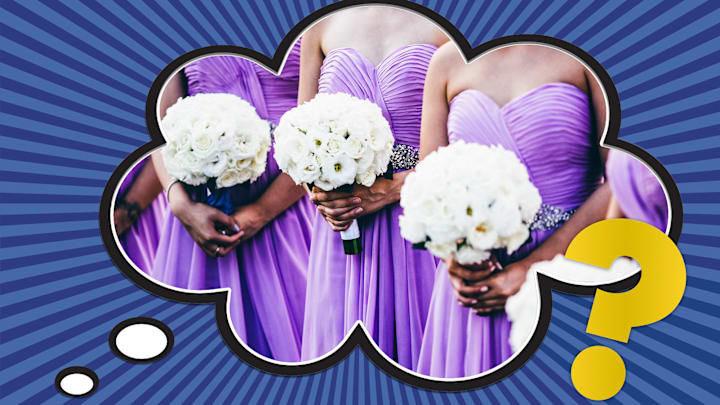The modern American wedding has its fair share of silly customs. White gowns for brides, diamond engagement rings, wedding registries, extravagant receptions—the list goes on. However, many of these so-called traditions are in fact relatively recent inventions, created or perpetuated by the wedding industry. But other seemingly strange wedding behaviors, like matching bridesmaids’ dresses, go much farther back.
The Bizarre History Behind Bridesmaids
It’s easy to imagine that the uniforms the bride-to-be chooses for her bridesmaids are created in order to make herself more dazzling by comparison. That may be true for some brides, but it’s not where the tradition started.
Beginning in ancient Roman times (when the idea of a bridal party first arose), bridesmaids would not only dress like each other, but also just like the bride, covering the altar with nearly indistinguishable ladies. And that was the point: the bridesmaids were decoys.
In the early days of the ritual we recognize today as the wedding, brides had a lot more than floral arrangements to worry about. Any glad tidings had the potential to attract evil spirits, for one thing—and then there were all the would-be grooms the bride had turned away. So to keep the bridal couple safe from demons and angry, rejected men, brides dressed their friends in matching wedding attire. The theory was that the bevy of brides would confuse any malcontents long enough for the happy couple to get their vows on.
The threat of demonic wedding crashers had petered out by the Victorian era, when brides began to relax their protocol and dress more elaborately than their bridal parties. Unfortunately for some modern bridesmaids, the uniform stuck.
Have you got a Big Question you'd like us to answer? If so, let us know by emailing us at bigquestions@mentalfloss.com.
Read More About Weddings:
A version of this story was originally published in 2016 and has been updated for 2025.
